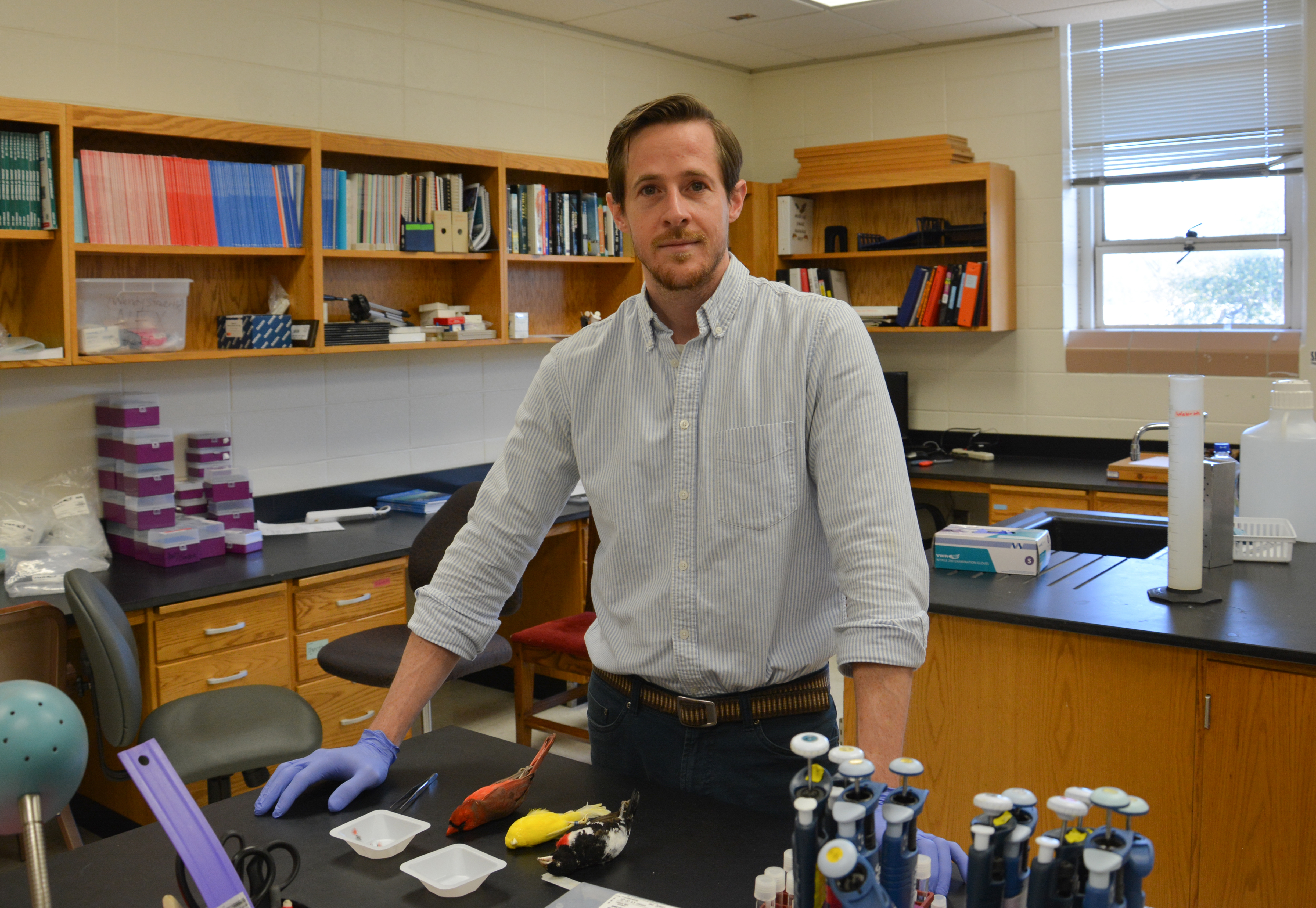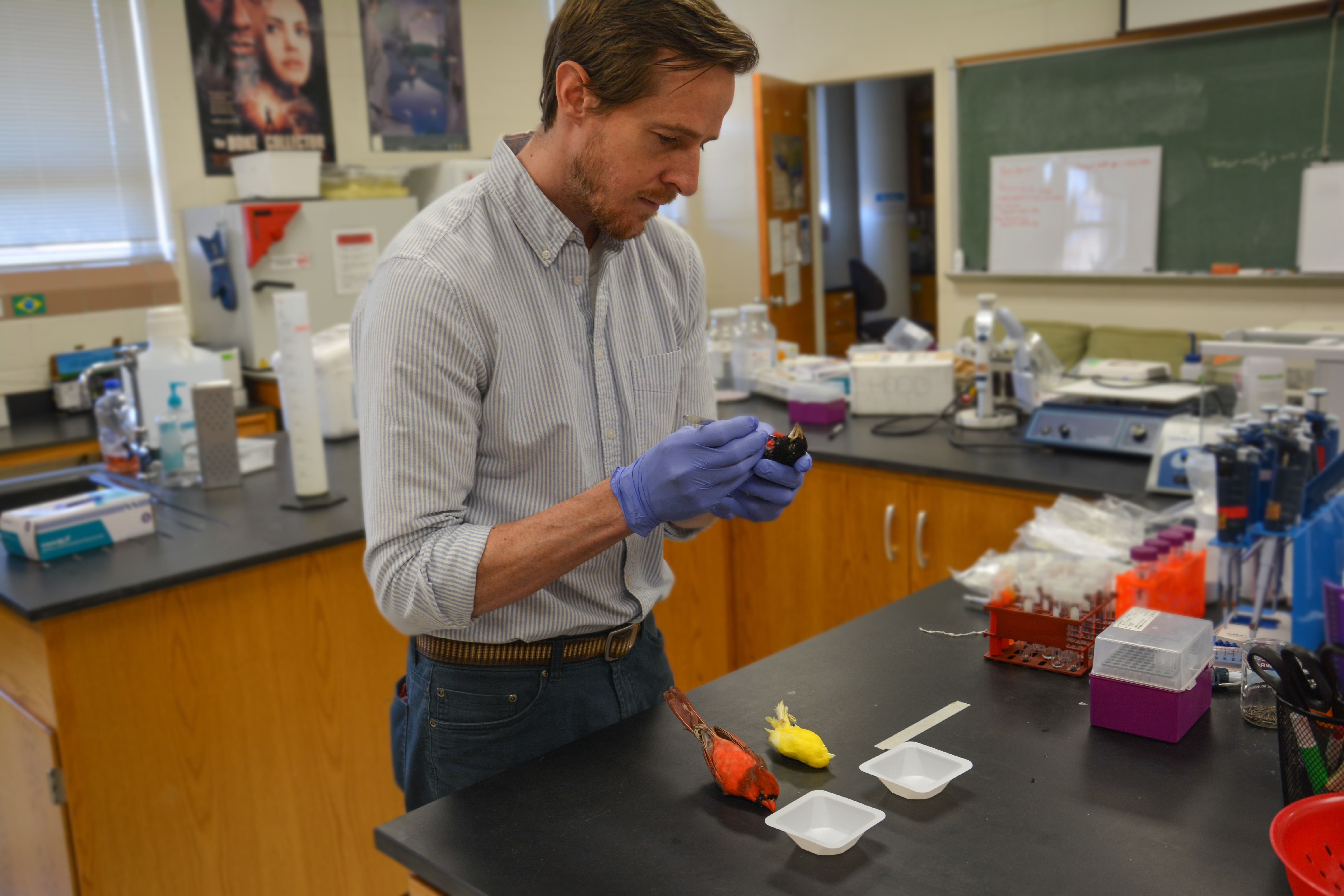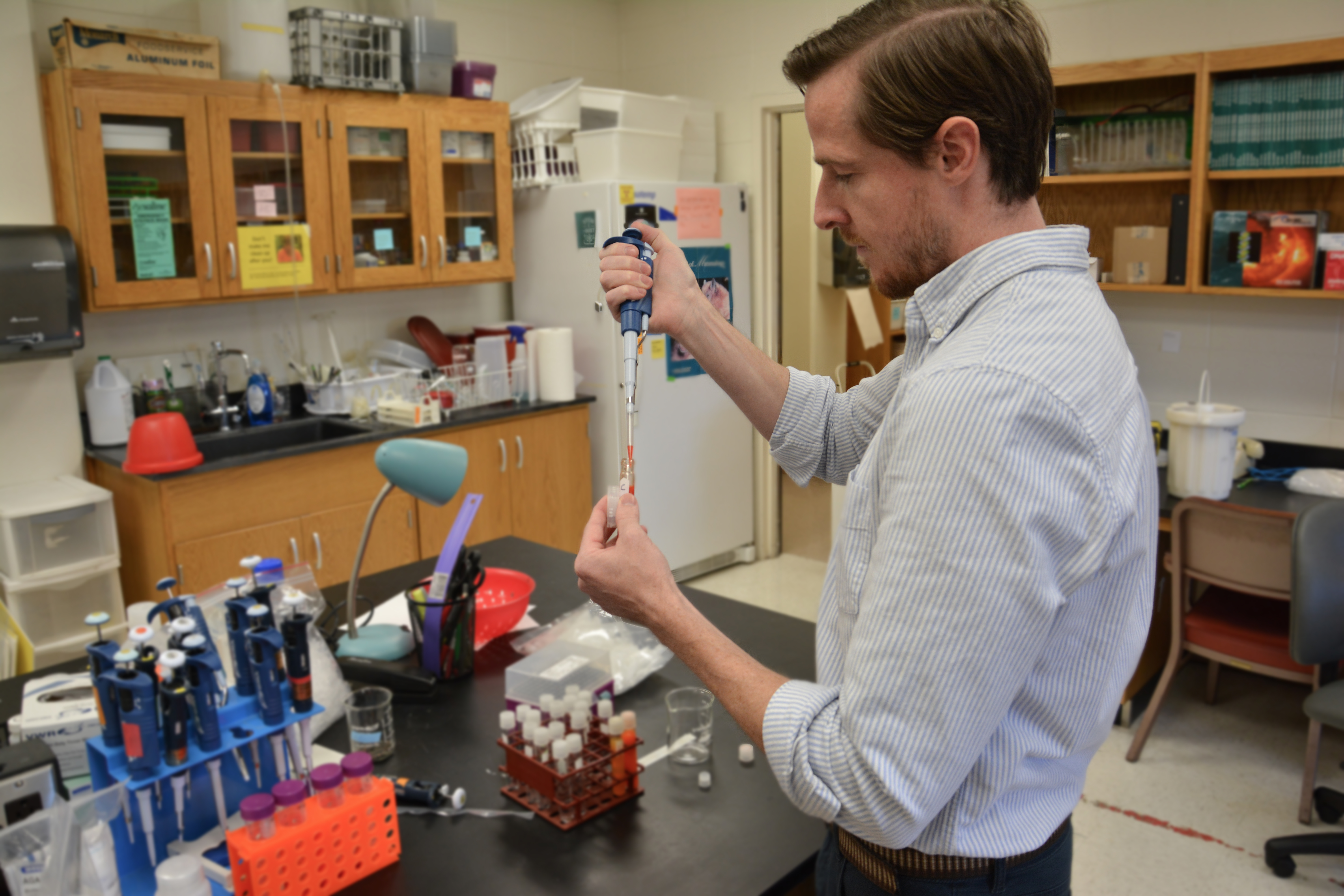COSAM News Articles 2018 January Graduate student turns class assignment into high-impact journal article
Graduate student turns class assignment into high-impact journal article
Ryan Weaver, a doctoral candidate in biological sciences, led a team of Auburn University and Universidade de São Paulo scientists in a project where they turned a class assignment into a published research article.
Scientists have long believed bird coloration is a direct indicator of bird quality and overall health, a hypothesis supported by the tendency of some breeds to assess the yellow and red feathers of prospective mates,
“For birds to display yellow or red feather coloration, they must first eat food that contains pigments called carotenoids,” said Geoffrey Hill, Auburn University professor of biology and co-author on the study. “But importantly, birds mostly eat yellow carotenoids. To produce red feathers, birds must first convert the yellow pigments to red. The importance of this conversion step in linking color to the quality and health of a bird has not been previously investigated.”
Weaver took up the challenge of exploring the relationship between pigment conversion and bird quality as part of an assignment in a graduate-level course that required students to hone meta-analytic techniques learned in class.
The research results yielded a pattern: Weaver discovered birds that converted carotenoids were more likely to be of higher quality than birds that skipped the conversion step and deposited only dietary yellow carotenoids to their feathers.
Taking the results a step further to ensure the pattern was indeed a result of carotenoid conversion and not a deeply rooted evolutionary or biological factor, Weaver enlisted the help of Eduardo Santos, professor at the Universidade de São Paulo and co-author on the study, to develop statistical models that incorporated the evolutionary history of all the birds included in the study as a means of isolating the effect of carotenoid conversion.
“We found that, after controlling for several potentially confounding factors, it looks like carotenoid conversion helps to make the link between feather coloration and individual quality stronger,” said Weaver. “These results should help future studies to focus on the specific mechanisms that link carotenoid conversion to a strong signal of individual quality in birds and other animals.”
In addition to Weaver, Hill and Santos, additional co-authors on the study include Anna Tucker, a graduate student in the School of Forestry and Wildlife Sciences, and Alan Wilson, professor in the School of Fisheries, Aquaculture and Aquatic Sciences, who taught the graduate-level class that inspired the project.
For more information, contact Weaver at rjw0019@auburn.edu.
Latest Headlines
-
02/12/2025
-
02/11/2025
-
02/10/2025
-
01/30/2025
-
12/03/2024



